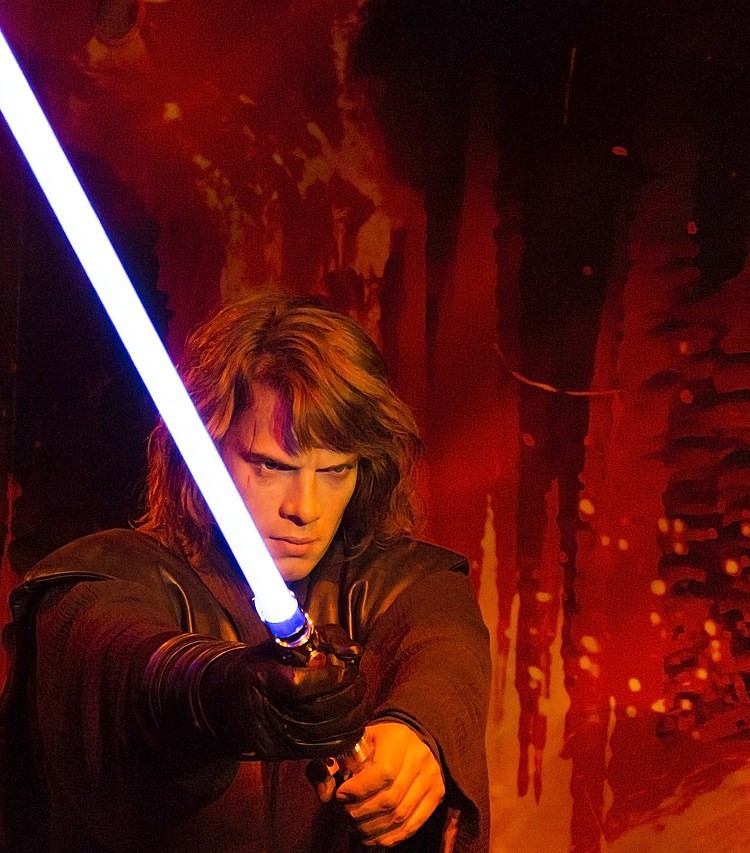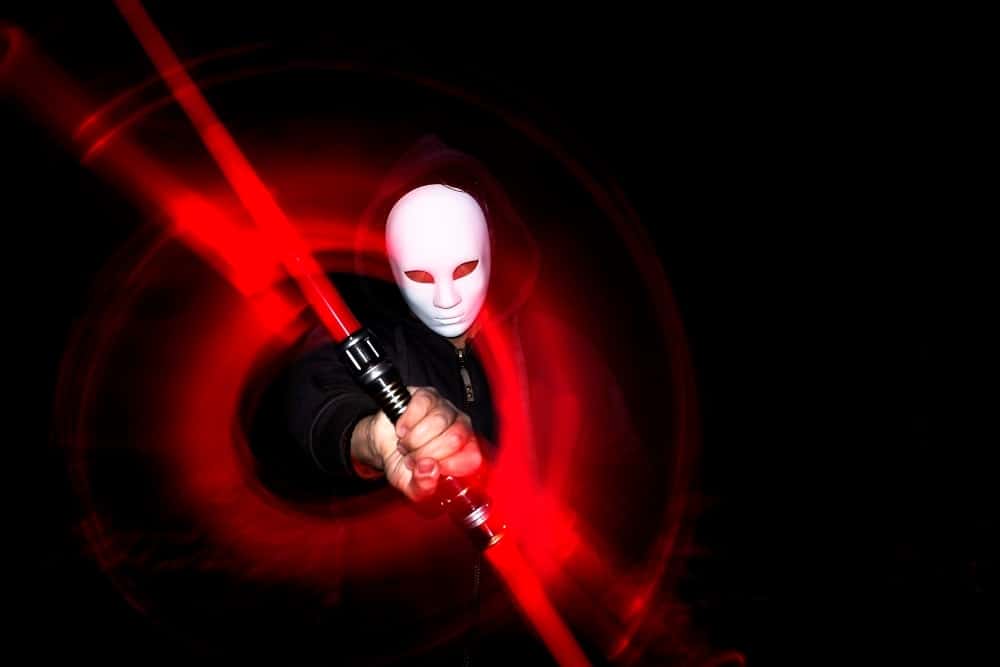A duel between lightsaber wielders is indeed fascinating to watch. Aside from the fancy moves and the scintillating sound a lightsaber makes when someone swings it, there’s more to lightsaber duels.
There are seven forms of lightsaber combat. You might ask, which one of them is the best one to use? To answer that, we should first get a basic look at what these forms are.
The 7 Lightsaber Forms
Form I – Shii-Cho: The Way of the Sarlacc
Shii-Cho is the first fighting style that every youngling should learn. Since a lot of us don’t know what lightsaber combat really is, it’s best to start with the basics. Shii-Cho teaches its practitioners basic attacks, simple parries, and target acquisition.
Notable Practitioners: Kento Marek, Starkiller, Luke Skywalker, Rey.
Form II – Makashi: The Way of the Ysalamiri
This lightsaber fighting style was developed primarily for lightsaber-to-lightsaber combat. In theory, Makashi is the most reliable style that you can learn when dueling. Aside from a refined style of lightsaber-wielding, this form emphasizes proper footwork.
Notable Practitioners: Count Dooku, Jerec, Qui-Gon Jinn, Jax Pavan.
Form III – Soresu: The Way of the Mynock
The 3rd fighting form of lightsaber combat is Soresu. This style is more defense-oriented. People who have a lot of stamina are perfect for this form. Soresu focuses on outlasting an opponent rather than injuring them. This style is also effective against projectiles and blaster fire.
Notable Practitioners: Sora Bulq, Darth Zannah, Darth Bane, Obi-Wan Kenobi.
Form IV – Ataru: The Way of the Hawk-Bat
Ataru is the 4th form of lightsaber style and focuses on more acrobatic and daring moves. Those who are agile, prefer to hit fast, and evade are perfect for Ataru. This style is also the flashiest among the forms as it utilizes flips, dodges, and other parkour-like maneuvers.
Notable Practitioners: Master Yoda, Mara Jade Skywalker, Ahsoka Tano, Shaak Ti.
Form V – Shien/Djem So: The Way of the Krayt Dragon
This form is categorized into two variations, Shien and Djem So. Shien is more effective against multiple opponents, blasters, and ranged enemies. Djem So, on the other hand, leans towards one on one combat. Both variations rely on brute strength to be effective.
Notable Practitioners: Kylo Ren, Darth Vader, The Grand Inquisitor, Adi Gallia, Khaat Qiyn.
Form VI – Niman: The Way of the Rancor
Form VI is the culmination of all the previous forms. Due to all the forms being incorporated in Niman, this style is considered the most complete. The fighting style is well rounded, with no significant weakness or advantages whatsoever.
Notable Practitioners: Obi-Wan Kenobi, Anakin Skywalker, Master Yoda, General Grievous, Cin Drallig, Count Dooku, Palpatine.

Form VII – Juyo/Vaapad: The Way of the Vornskr
The last fighting form of lightsaber combat is Form VII. Form VII is further divided into two variations, known as Juyo and Vaapad. Both varieties focus more on vicious attacks and faster dodges for counterattacks.
Notable Juyo Practitioners: Darth Sidious, General Grievous, Darth Maul, Vrook Lamar, Zez-Kai Ell, Kavar.
What’s the Easiest Style to Learn?
Realistically speaking, the easiest to learn is Shii-Cho and Shien/Djem So. The reason for this is that Shii-Cho is full of basic real-life sword fighting moves such as thrusting, sweeps, and slashes.
Shien/Djem So might use brute force and physicality but is effective nonetheless. The lack of fancy footwork also means that almost everyone can learn its moves. A technique called the “Falling Avalanche” is a simple, downward slash that requires the wielder to slash with all their might.
So What Is the Best Lightsaber Fighting Form?
To answer the question of what really is the best lightsaber fighting form would depend on three major factors: Body type, Situation, and Philosophy.
Body Type
Although everyone can practice all of the forms, their body type should complement the style they’re trying to master. For example, a person who is burly and rather slow will have a difficult time learning Ataru. For the same reason, a faster and lighter individual would have a hard time delivering hard blows found in Form V.
Situation
Each form was explicitly developed to address a concern. For example, Soresu is defensively oriented and is focused on deflecting blaster fire. Makashi focuses on footwork which makes it excellent for one on one combat. For stealthy and quick combat, Ataru works best.
Philosophy
All the forms also have philosophy ingrained in them. This philosophy also influences the moves that a style has. In more calmer approaches, Soresu is the best as it is more passive. Form V and Form VII, on the other hand, focuses on aggression.
Both forms also require their wielders to be more decisive. Niman, being the most complete, has a philosophy of non-aggression and being more diplomatic, hence its other name, “The Diplomat’s Form.”
Conclusion
Now that we know all the seven forms and everything that is to know about them, we can all conclude that Form V is the best lightsaber form. Here are some pros and cons to further strengthen the fact why Form V deserves to be on top:
Form V – Pros
- Niman is only an upgraded version of Form V, as politicians and diplomats use it.
- Realistically speaking, Form V is easier to learn among all the fighting styles.
- A lot of people are built for Form V.
- Lacks the diplomatic, non-aggressive philosophy of Soresu and Niman.
- Shien uses defense for offense while Djem So uses offense for defense.
- It doesn’t rely on using the Force too much.
- It has more real-world applications.
Form V – Cons
- It might be slower than the other forms.
- It requires the user to have excellent health and stamina.
- Too aggressive for some.
As you can see, the pros clearly outweigh the cons. Although some styles have more techniques and are faster, these facts make Form V and its two variants Shien and Djem So, the best lightsaber form.

